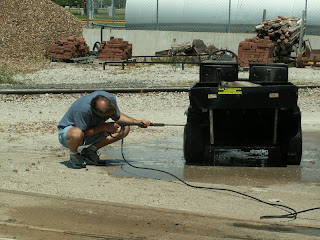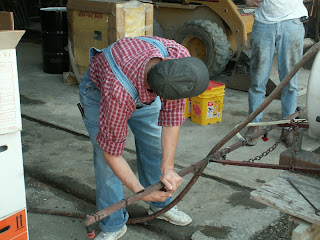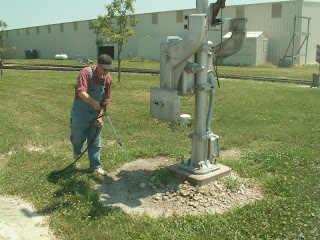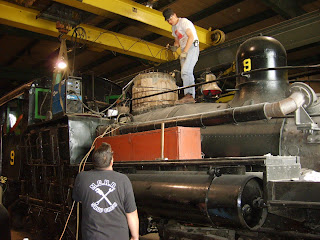Director Dan H. cleaned the three golf carts which get extensive use during the Old Threshers' Reunion and other events throughout the season. The gasoline cart only needed a cleaning while the two electrics needed some power pack maintenance. Many of the batteries were "old" and the gassing out of the acid had also taken a toll on the wiring. Dan H. removed all the wiring and 70% of the older batteries and will be getting new (or at least, newer) replacement parts.



Meanwhile, this author continued the wet sanding and buffing of the recently painted boiler jacket. The two component polyurethane paint didn't go on as well as we hoped. The easy solution was to repair the painted surface by wet sanding and polishing. The results were spectacular. The surface is ultra smooth and has an deep shine that will please anyone.


Several studs had broken off the firebox door frame during locomotive disassembly. Director Dave O. fabricated new studs and welded them into place.


Several unidentified volunteers helped Roger R. install the smoke box to pilot braces.

Roger R. hunts for a large 3/4 drive socket.

Several volunteers (Dave O., Dallas K., and Bill B.) discussing what to do next.

Part of the 6's reassembly includes resurfacing the seat of the spool valve. Eric C. is milling a large chunk of round stock which will fit into the standpipe so that it can be placed onto the lathe for milling.


Some of the 6's brake parts need servicing. Roger R. carefully fits the units into a shipping container.

As part of the color scheme change, the sand dome gets prepared for painting. The author, after applying the "new" color to the sheet metal portions of the boiler's top accouterments masks the new paint and roughs up some of the over spray for the application of the black paint.



The steam dome lower ring and sand dome show their new black paint. The "new" color of the sheet metal is hidden by the masking paper.


-steam.airman













